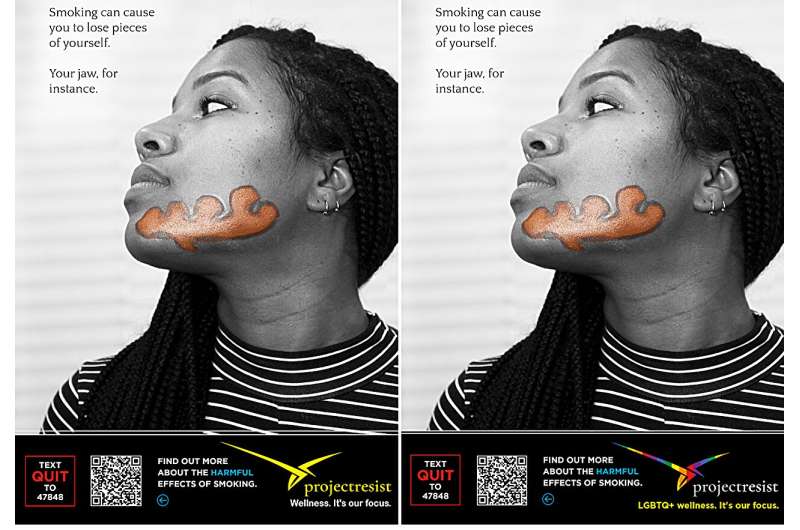This article has been reviewed according to Science X's editorial process and policies. Editors have highlighted the following attributes while ensuring the content's credibility:
fact-checked
peer-reviewed publication
trusted source
proofread
Targeted anti-smoking messages for LGBTQ+ young women

In the U.S., young women who identify as LGBTQ+ are up 4.8 times more likely to smoke cigarettes than their heterosexual peers.
"This places them at significantly higher risks of smoking-related illnesses including cancers and heart disease," says Professor Andy Tan, director of Health Communication & Equity Lab at the Annenberg School for Communication at the University of Pennsylvania.
As part of Project Resist, a study to test health messaging approaches to increase resistance to tobacco marketing among young adult sexual minority women, Tan and colleagues recently published a new paper on LGBTQ+ young women and smoking in the American Journal of Preventive Medicine. Here's a quick summary of their findings, written by the researchers for the PRIDE Study:
Study participants were ages 18–30, identified as LGBTQ+, and identified as women. This included 1,212 participants who currently smoke and 1,002 who did not smoke.
The researchers recruited participants from existing groups for online studies (including The PRIDE Study), social media, and a dating app.
Researchers created tailored and non-tailored anti-smoking messages. Tailored messages included an LGBTQ+ logo and slogan, while non-tailored messages did not. Both sets of messages used the same photos and same text that encouraged quitting or avoiding smoking. They randomly assigned participants to see either tailored or non-tailored messages over one month.
Participants answered surveys about their smoking history, plans to purchase cigarettes or quit smoking, attitudes and beliefs about the tobacco industry, and demographics. They saw messages for one month and then answered a follow-up survey.
This study was one of the first about helping to quit smoking that focused specifically on young adult LGBTQ+ women, as there is a gap in knowledge of effective strategies for this group. This study is more inclusive by recruiting both cisgender and transgender women participants.
Tailored messages were more effective than non-tailored messages in reducing positive beliefs about the tobacco industry among those who smoke. After seeing the messages for one month, both types of messages had positive effects among those who smoke, such as more plans to quit smoking and fewer plans to purchase cigarettes. Both types of messages also had positive effects among those who do not smoke, such as having more negative attitudes and beliefs about the tobacco industry.
Tailoring anti-smoking messages for the LGBTQ+ community can be effective in reducing positive beliefs about the tobacco industry. This approach can help inform the design of future anti-smoking campaigns.
The same group of researchers will continue adjusting anti-smoking messages and testing their effects in a follow-up research study. They are also exploring ways to design tailored messages to meet the needs of LGBTQ+ audiences more broadly.
More information: Andy S.L. Tan et al, Culturally Tailored Anti-Smoking Messages: A Randomized Trial With U.S. Sexual Minority Young Women, American Journal of Preventive Medicine (2023). DOI: 10.1016/j.amepre.2023.12.001




















